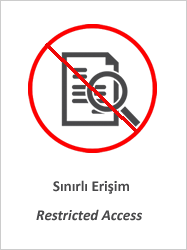Applicability of Modified T5 Temper for Aluminium Forged Parts
Künye
SÜRMEN, Ömer, Sakin ZEYTİN, Yücel GENÇER & Mehmet TARAKÇI. "Applicability of Modified T5 Temper for Aluminium Forged Parts". 29th Heat Treating Society Conference, HEAT TREAT (2017): 12-18.Özet
In industrial applications, hot forging of aluminum alloy AA 6082 is carried out at 480 °C following a preheating process in an induction heater. The forged parts are then cooled down to room temperature, heated up again to apply conventional solution treatment followed by quenching and artificial aging processes. Repetitive heating/cooling steps are a significant cause of energy loss. The aim of this study was to provide time and energy efficiency by combining hot forging and solution treatment processes in a single high temperature process. To achieve this a new and improved heat treatment pattern was introduced. AA6082 parts were quenched immediately from a rather high forging temperature and artificially aged without any necessity for a second heating step and solution treatment. Mechanical properties of parts heat treated by this new pattern were than compared to the mechanical properties of parts heat treated conventionally. Heat treatment of AA6082 alloys were carried out for 30 minutes at three different temperatures (480, 510 and 540 °C) for comparison, followed by forging, water quenching and artificial aging (180°C, 8h). Mechanical properties of each sample were investigated using hardness and tensile tests. Elemental analysis and microstructural characterization were carried out using Energy Dispersive Spectrometry (EDS), Scanning Electron Microscope (SEM) and Optical Microscope (OM). Required minimum hardness for the samples after heat treatment was considered as 90 HB. This hardness value could not be obtained for the parts forged/solution treated at 480°C and 510°C. Hardness values of parts heat treated at 540°C, water quenched and aged at 180°C were higher than 90 HB. © 2017 ASM International, All rights reserved.



















